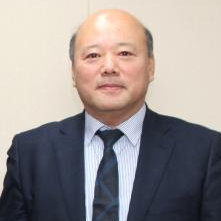Plasma Medicine Technologies: Volume II
A special issue of Applied Sciences (ISSN 2076-3417). This special issue belongs to the section "Applied Biosciences and Bioengineering".
Deadline for manuscript submissions: closed (30 November 2022) | Viewed by 7481
Special Issue Editors
Interests: plasma medicine; biophysics; biomaterials; nanotechnology; nanomedicine
Special Issues, Collections and Topics in MDPI journals
Interests: atmospheric pressure plasma; plasma physics; reactive oxygen species; reactive nitrogen species
Special Issues, Collections and Topics in MDPI journals
Interests: redox medicine; immunology; cancer; cold physical plasma; reactive oxygen and nitrogen species; redox signaling
Special Issues, Collections and Topics in MDPI journals
Interests: plasma medicine
Special Issues, Collections and Topics in MDPI journals
Interests: plasma medicine; cancer biology; immune-modulation
Special Issues, Collections and Topics in MDPI journals
Special Issue Information
Dear Colleagues,
This Special Issue, entitled “Plasma Medicine Technologies”, aims to cover all the latest outstanding developments of plasma bioscience and medicine. This Special Issue will describe recent research and developments in the field of plasma medicine. Plasma medicine is an interdisciplinary field that combines the principles of plasma physics, material science, bioscience, and medicine towards the development of therapeutic strategies. The study of plasma medicine has yielded the development of new treatment opportunities in medical and dental sciences. The objective of this Special Issue is to present some research underlying new therapeutic methods useful in medicine, dentistry, sterilization, and, in the current scenario, challenges and perspectives in biomedical sciences. This issue will focus on basic studies on the characterization of bioplasma sources applicable to living cells, especially to the human body, and fundamental research on mutual intreactions between the bioplasma and organic–inorganic, liquids and bio- or nanomaterials. The knowledge that has arisen from studies in the plasma medicine area may translate into new innovations to treat patients in daily clinics.
Prof. Dr. Nagendra Kumar Kaushik
Prof. Dr. Eun Ha Choi
Dr. Sander Bekeschus
Prof. Dr. Hiromasa Tanaka
Dr. Abraham Lin
Guest Editors
Manuscript Submission Information
Manuscripts should be submitted online at www.mdpi.com by registering and logging in to this website. Once you are registered, click here to go to the submission form. Manuscripts can be submitted until the deadline. All submissions that pass pre-check are peer-reviewed. Accepted papers will be published continuously in the journal (as soon as accepted) and will be listed together on the special issue website. Research articles, review articles as well as short communications are invited. For planned papers, a title and short abstract (about 100 words) can be sent to the Editorial Office for announcement on this website.
Submitted manuscripts should not have been published previously, nor be under consideration for publication elsewhere (except conference proceedings papers). All manuscripts are thoroughly refereed through a single-blind peer-review process. A guide for authors and other relevant information for submission of manuscripts is available on the Instructions for Authors page. Applied Sciences is an international peer-reviewed open access semimonthly journal published by MDPI.
Please visit the Instructions for Authors page before submitting a manuscript. The Article Processing Charge (APC) for publication in this open access journal is 2400 CHF (Swiss Francs). Submitted papers should be well formatted and use good English. Authors may use MDPI's English editing service prior to publication or during author revisions.
Keywords
- plasma medicine
- cold plasma
- plasma physics









